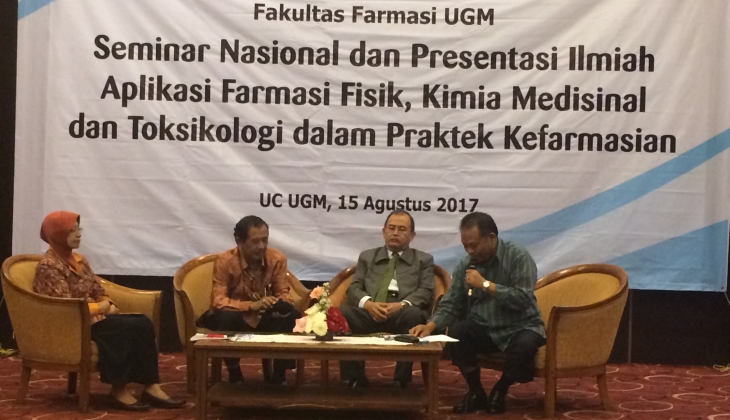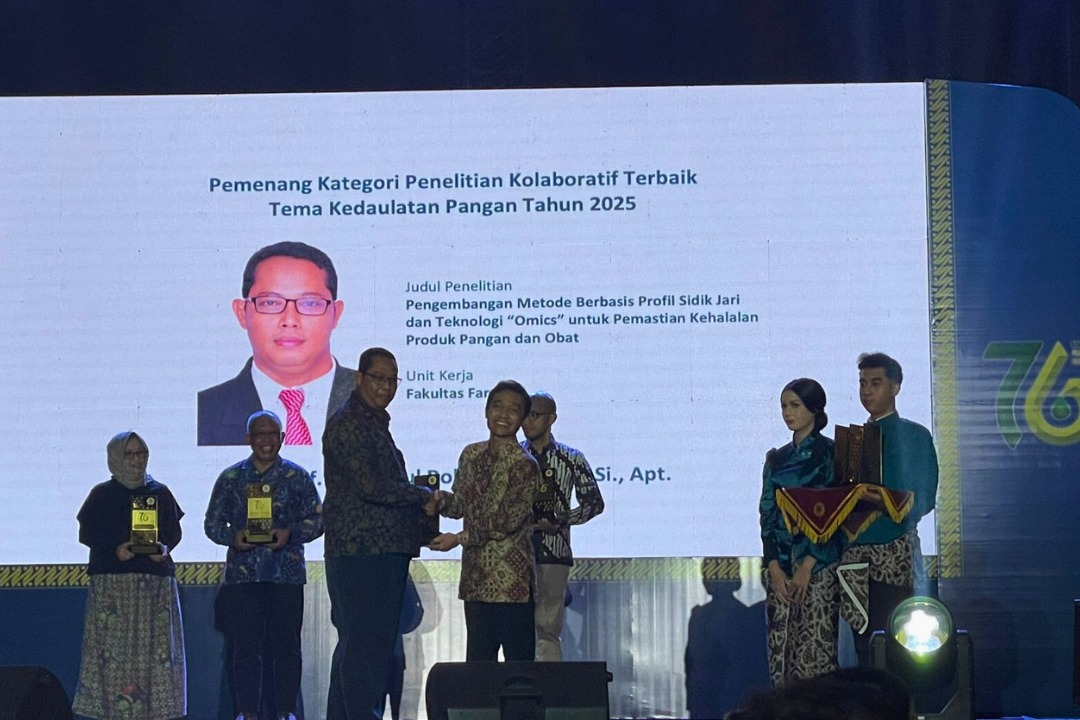The discovery of active compound as a guiding compound in discovering drug is essential. One of them is by discovering new compounds from natural materials. UGM Lecturer from Faculty of Pharmacy, Dr. Sri Mulyani, SU., Apt., succeeded to discover three new compounds from Kirinyuh (Eupatorium inulifolium). The plant leaf which is obtained from Kaliurang area in Yogyakarta, according to Sri Mulyani, after being researched, it contains two triperten pentacyclic compounds and one triperten tetracyclic compound.
“At first, I just wanted to determine the structure of chemical compounds in the plant,” said Sri Mulyani Mulyadi during the National Seminar which was held by Faculty of Pharmacy UGM entitled Application of Physical Pharmacy, Medicinal Chemistry, and Toxicology in Pharmaceutical Practices on Tuesday (15/8) at University Club UGM.
The research on this medicinal plant has been conducted for more than half of her working life as a lecturer at Faculty of Pharmacy UGM. Her diligence in doing the research was not in vain because she managed to discover the structure of new compounds in the plant and named them after her name. She said during the research, this species of Indonesia’s tropical plant is known for containing flavonoids and sesquiterpene lactone which are cytotoxic and toxic.
“The modification of the compounds in Eupatorium can be done by extending the chain, adding double bonds and combining compounds,” she added.
Those active compounds in Eupatorium were tested on five types of cell which are Myeloma cell, Hella cell, breast cancer cell T47D and MCF7, as well as Vero cell. In addition, she also performed docking between triperten pentacyclic compounds with the cancer cell target. Although she did not explain the plant potential as cancer drug, Sri Mulyani emphasized the triperten pentacyclic compounds in the ester form are more active than the alcohol form. “To develop it into drugs needs an advanced research, but there is a potential of it,” said Sri Mulyani.
In the same occasion, Professor of Pharmacy UGM, Prof. Dr. Suwaldi Martodiharjo, M.Sc., Apt., said the drug’s physiochemical characteristic determines the pharmaceutical formulation. Every drug has a different physiochemical characteristic due to its molecule structure. “For pharmacists, they have to recognize the molecule structure in order to know the physiochemical characteristic and stability of a drug,” said Prof. Suwaldi.
Meanwhile, Prof. Dr. Sugiyanto, Su., Apt., said toxicology has attracted attention from scientists and policy maker due to the discovery of many new compounds or xenobiotic in drugs, pesticides, environmental pollutants, food additives, and industrial product compounds.
However, pharmacists have yet to participate in the forensic and environmental toxicology. On the other hand, the capability in toxicology can analyze the compounds in biological samples for forensic activities as well as analyze compounds in small, micro, and nano quantities. “This analysis capability has an essential role when it is combined with the pharmacological, biochemical, physiological, and pathological comprehensions,” said Prof. Sugiyanto.






